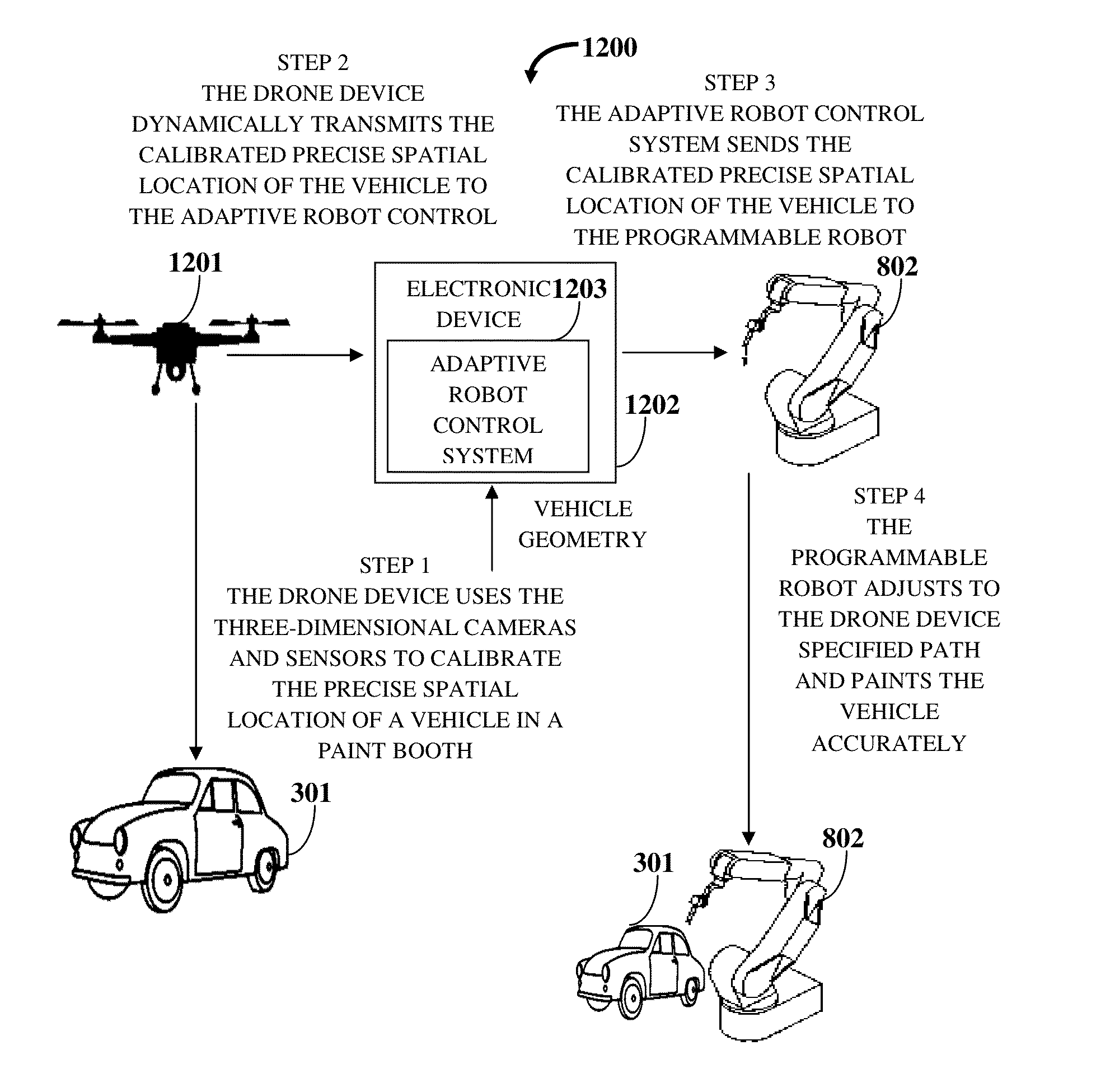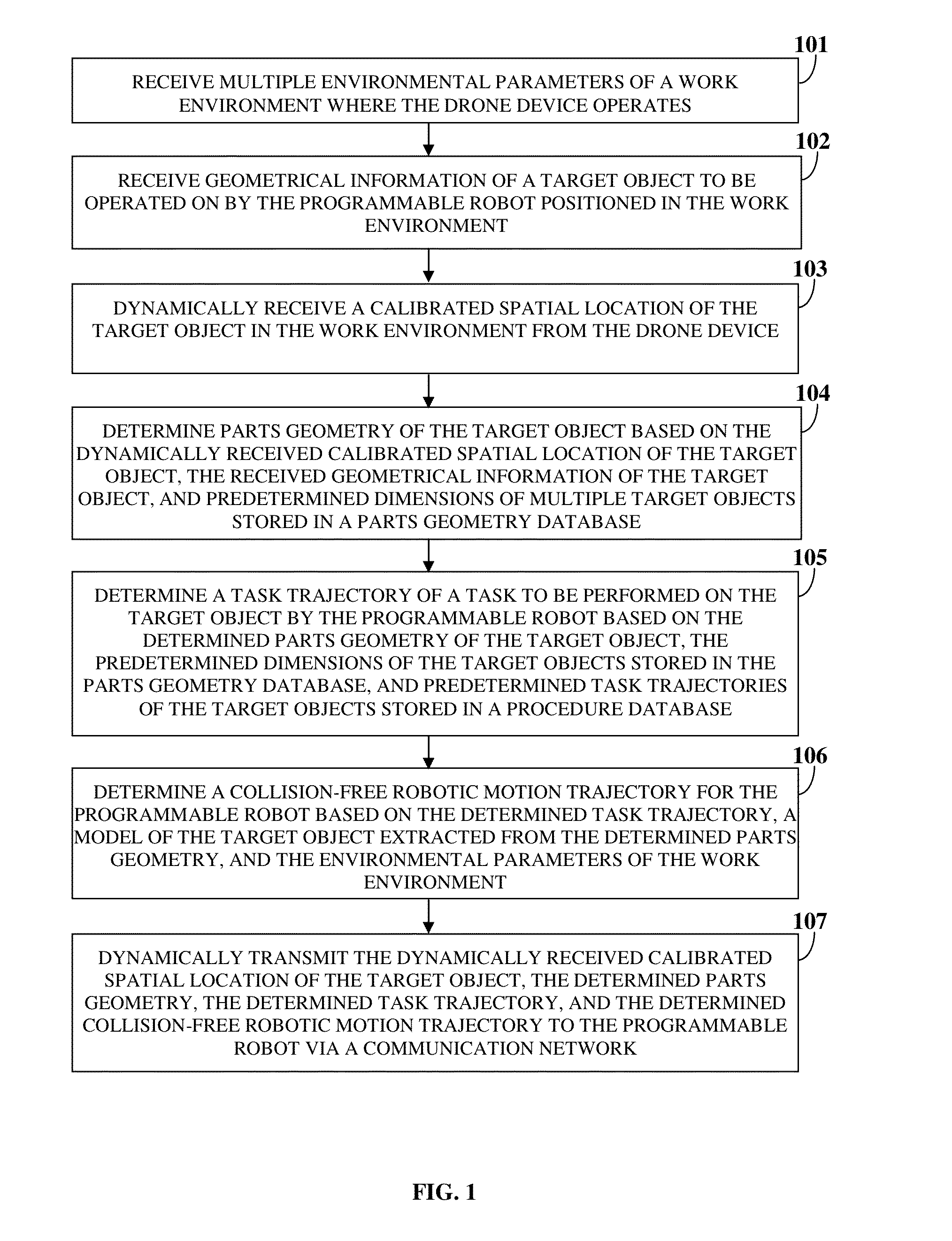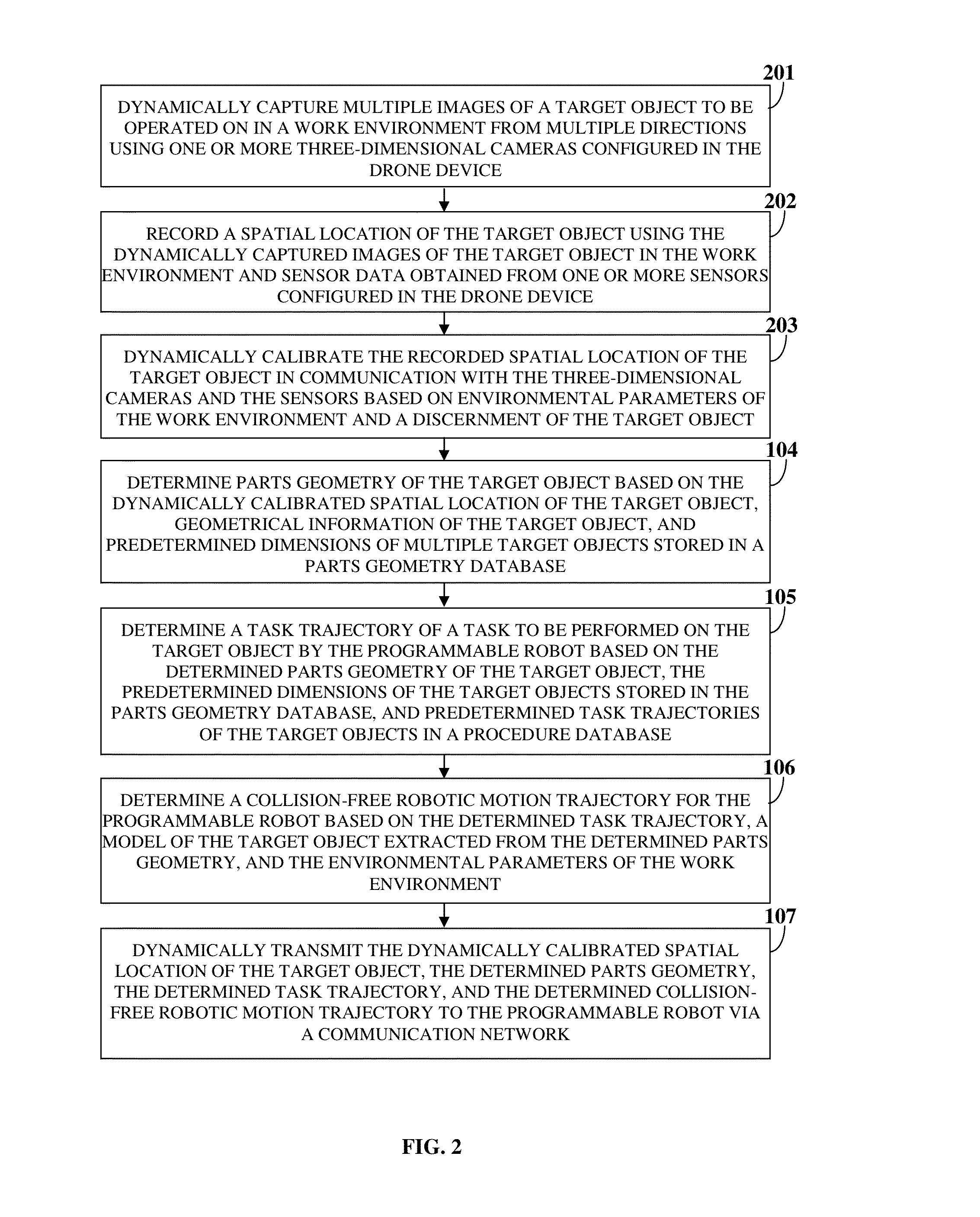Drone Assisted Adaptive Robot Control
a robot control and robotic technology, applied in the direction of programmed robots, manipulators, instruments, etc., can solve the problems of misalignment of skids and vehicles, repetitive tasks performed by programmed robots, and inability to adapt to new tasks or new environments
- Summary
- Abstract
- Description
- Claims
- Application Information
AI Technical Summary
Benefits of technology
Problems solved by technology
Method used
Image
Examples
Embodiment Construction
[0031]FIG. 1 illustrates a method for adaptively controlling a programmable robot, in communication with a drone device. As used herein, “programmable robot” refers to a multifunctional, automated machine programmed to move, for example, material, component parts, tools, or devices through variable programmed motions for performing multiple different tasks on a target object. The programmable robot is, for example, a mobile robot, an industrial robot, a service robot, a factory robot, a military robot, etc. Also, as used herein, “target object” refers to an object positioned in a work environment and targeted by a programmable robot for performance of a task on the object. Also, as used herein, “work environment” refers to an operating environment for performing tasks on a target object. For example, a paint booth is a work environment where a target object such as a vehicle can be painted. Also, as used herein, “drone device” refers to an unmanned aerial device configured to naviga...
PUM
 Login to View More
Login to View More Abstract
Description
Claims
Application Information
 Login to View More
Login to View More - R&D
- Intellectual Property
- Life Sciences
- Materials
- Tech Scout
- Unparalleled Data Quality
- Higher Quality Content
- 60% Fewer Hallucinations
Browse by: Latest US Patents, China's latest patents, Technical Efficacy Thesaurus, Application Domain, Technology Topic, Popular Technical Reports.
© 2025 PatSnap. All rights reserved.Legal|Privacy policy|Modern Slavery Act Transparency Statement|Sitemap|About US| Contact US: help@patsnap.com



